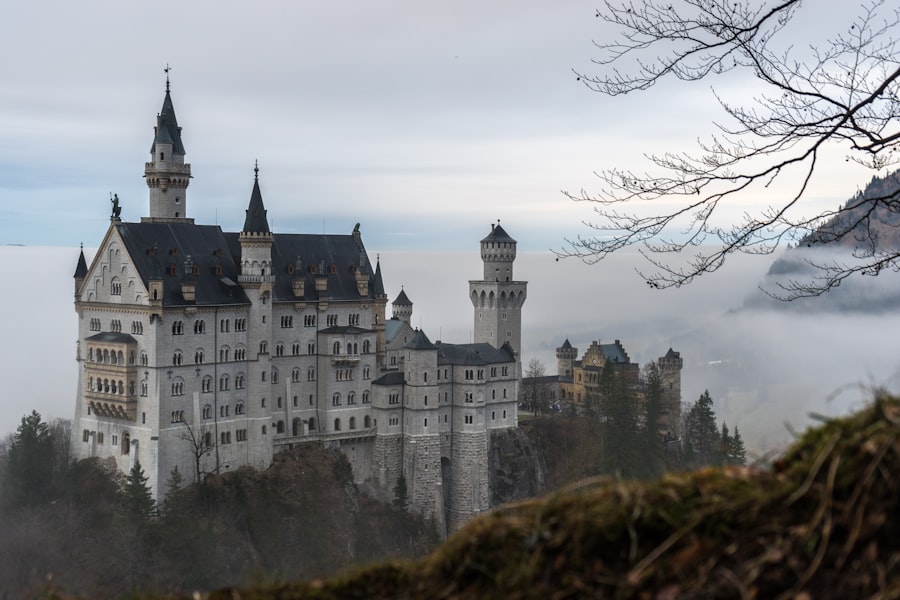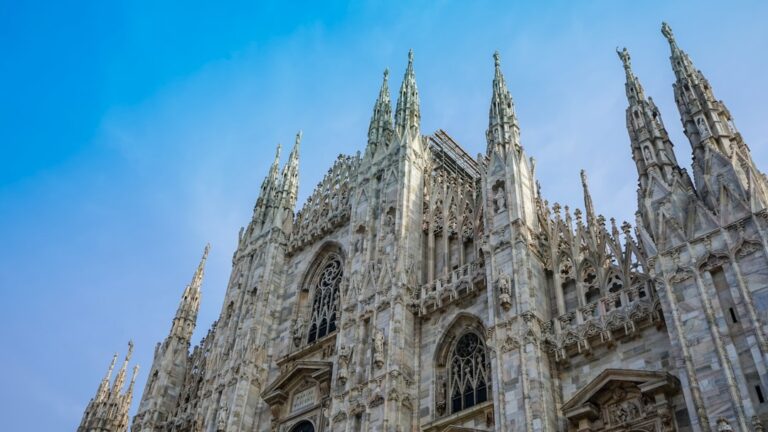The area now known as Jacksonville, Florida, was originally inhabited by Native American tribes, including the Timucua, who thrived in the region long before European contact. These indigenous peoples established settlements along the banks of the St. Johns River, utilizing its abundant resources for fishing, hunting, and agriculture.
The Timucua were skilled in crafting tools and pottery, and their social structures were complex, with a rich tapestry of cultural practices that included storytelling, music, and dance. The river served not only as a source of sustenance but also as a vital transportation route, facilitating trade among various tribes and later with European settlers. In the early 16th century, Spanish explorers arrived in Florida, marking the beginning of European influence in the region.
The Spanish established missions to convert Native Americans to Christianity and to claim the land for Spain. The first significant European presence in Cowford came with the establishment of Fort Caroline in 1564 by French Huguenots, although it was short-lived due to Spanish attacks. The Spanish eventually took control of the area, renaming it San Mateo and further integrating it into their colonial empire.
This period saw the introduction of European agricultural practices and livestock, which would have lasting effects on the local economy and landscape. The interactions between the Spanish colonizers and the Native American populations were often fraught with conflict, leading to significant demographic changes as diseases brought by Europeans decimated indigenous communities.
The Rise of Jacksonville: From Cowford to the River City
Strategic Location and Rapid Growth
The strategic location of Jacksonville along the St. Johns River made it an ideal hub for trade and transportation. As a result, the town began to grow rapidly, attracting settlers from various parts of the United States seeking new opportunities in the fertile lands of Florida. By the mid-1800s, Jacksonville had developed into a bustling port city, with steamboats regularly navigating the river to transport goods and passengers.
Railroad and Economic Boom
The arrival of the railroad in the 1880s further accelerated Jacksonville’s growth. The railroad connected the city to other major markets in Florida and beyond, facilitating commerce and tourism. This period saw an influx of new residents and businesses, leading to a diverse population that contributed to the city’s cultural fabric.
Infrastructure and Tourism Development
The establishment of hotels and resorts along the riverbank catered to tourists seeking warmth during the winter months, solidifying Jacksonville’s reputation as a desirable destination. As the city expanded, it adopted modern infrastructure, including schools, churches, and public buildings, reflecting its burgeoning status as a key player in Florida’s economic landscape.
Exploring the Cultural Heritage of Jacksonville: Art, Music, and Cuisine

Jacksonville’s cultural heritage is a vibrant tapestry woven from its diverse population and historical influences. The city boasts a thriving arts scene that encompasses visual arts, theater, and music. Institutions such as the Cummer Museum of Art and Gardens showcase an impressive collection of European and American art, while also providing a beautiful setting for community events and educational programs.
Local galleries frequently feature works by regional artists, highlighting Jacksonville’s commitment to fostering creativity and artistic expression. Music is another cornerstone of Jacksonville’s cultural identity. The city has produced notable musicians across various genres, including Southern rock legends Lynyrd Skynyrd and jazz greats like Ray Charles.
The annual Jacksonville Jazz Festival attracts thousands of visitors each year, celebrating both local talent and international artists. Additionally, the city’s music scene is enriched by its rich history of blues and country music, with numerous venues hosting live performances that reflect this diverse musical heritage. Culinary offerings in Jacksonville are equally diverse, influenced by its coastal location and multicultural population.
Seafood plays a prominent role in local cuisine, with dishes featuring fresh catches from the Atlantic Ocean. Restaurants throughout the city serve up traditional Southern fare alongside international flavors, reflecting the melting pot that Jacksonville has become. Events like the Jacksonville Food Festival highlight local chefs and their innovative approaches to cuisine, showcasing everything from classic Southern dishes to contemporary culinary trends.
The Impact of the Civil War and Reconstruction on Jacksonville’s Development
| Aspect | Impact |
|---|---|
| Economic Development | The Civil War disrupted trade and caused economic hardship, but Reconstruction brought investments in infrastructure and industry. |
| Population Growth | The Civil War led to a decline in population, but Reconstruction efforts attracted new residents and immigrants. |
| Racial Relations | The Civil War and Reconstruction period saw significant changes in racial dynamics, including the end of slavery and the rise of segregation. |
| Urban Planning | Reconstruction efforts led to the development of new neighborhoods, public buildings, and transportation systems in Jacksonville. |
The Civil War had a profound impact on Jacksonville’s development, as it did across much of the Southern United States. Initially a strategic location for both Union and Confederate forces due to its port facilities and rail connections, Jacksonville changed hands multiple times during the conflict. The city was occupied by Union troops in 1862, leading to significant changes in its social and economic landscape.
Many residents fled or were displaced during this tumultuous period, resulting in a decline in population and economic activity. Following the war, Reconstruction brought both challenges and opportunities for Jacksonville. The city faced significant economic hardship as it struggled to rebuild after years of conflict.
However, this period also saw advancements in civil rights for African Americans, who began to assert their presence in various sectors of society. The establishment of schools and churches provided a foundation for community organization and empowerment among Black residents. Despite facing systemic racism and discrimination, African Americans played a crucial role in shaping Jacksonville’s post-war identity.
As Reconstruction progressed, Jacksonville began to recover economically. The development of new industries and infrastructure projects revitalized the local economy. Railroads expanded further into Florida, connecting Jacksonville to other burgeoning towns and facilitating trade.
This resurgence laid the groundwork for future growth as businesses began to flourish once again.
Jacksonville’s Role in the Civil Rights Movement and its Legacy Today
Jacksonville played a significant role in the Civil Rights Movement during the 1960s, becoming a focal point for activism in Florida. Local leaders organized protests against segregation and discrimination, advocating for equal rights for African Americans in education, employment, and public accommodations. Notable figures such as Philip Randolph emerged from Jacksonville’s vibrant African American community, using their influence to mobilize support for civil rights initiatives.
The city witnessed numerous demonstrations that highlighted racial injustices, including sit-ins at segregated lunch counters and marches demanding desegregation of public facilities. These actions were met with resistance from local authorities but ultimately contributed to broader national movements advocating for civil rights legislation. The passage of landmark laws such as the Civil Rights Act of 1964 and the Voting Rights Act of 1965 marked significant victories for activists in Jacksonville and across the nation.
Today, Jacksonville continues to grapple with its civil rights legacy while striving for social justice and equity. Various organizations work tirelessly to address ongoing issues related to race relations and economic disparities within the community. Educational programs aimed at promoting awareness of civil rights history are implemented in schools throughout the city, ensuring that future generations understand the struggles faced by those who fought for equality.
Preserving the Charm of Cowford: Historic Landmarks and Architectural Treasures

The preservation of Cowford’s historic charm is evident in its many landmarks and architectural treasures that tell the story of Jacksonville’s past. One notable site is Fort Caroline National Memorial, which commemorates the early French settlement that marked one of the first European attempts at colonization in North America. This site not only serves as a reminder of early exploration but also highlights the complex interactions between European settlers and Native Americans.
Another significant landmark is the historic Riverside neighborhood, known for its stunning architecture that reflects various styles from different eras. The area features beautiful Victorian homes alongside Mediterranean Revival structures that showcase Jacksonville’s architectural diversity. Preservation efforts have been instrumental in maintaining these historic buildings while promoting community engagement through events such as neighborhood tours and festivals.
The city also boasts several museums dedicated to preserving its history, including the Museum of Science & History (MOSH) and the Jacksonville Historical Society. These institutions provide valuable insights into Jacksonville’s past through exhibits that explore everything from Native American history to modern developments. By fostering an appreciation for its rich heritage, Jacksonville continues to honor its roots while embracing progress.
In conclusion, Jacksonville’s journey from Cowford to a vibrant urban center is marked by rich historical narratives that reflect its diverse cultural heritage. From early Native American settlements through periods of colonization and civil rights activism, each chapter contributes to a deeper understanding of this dynamic city today. As preservation efforts continue alongside ongoing social initiatives, Jacksonville remains committed to honoring its past while looking toward a promising future.








